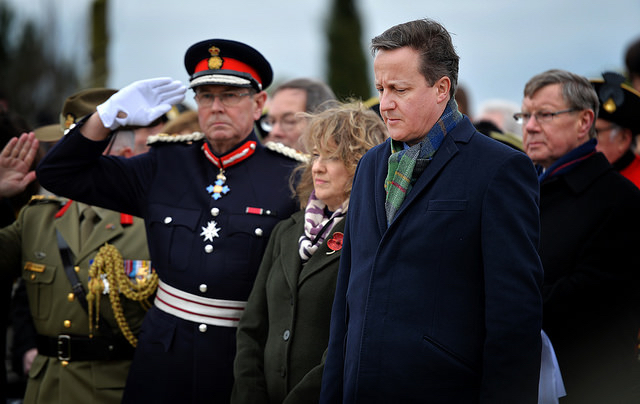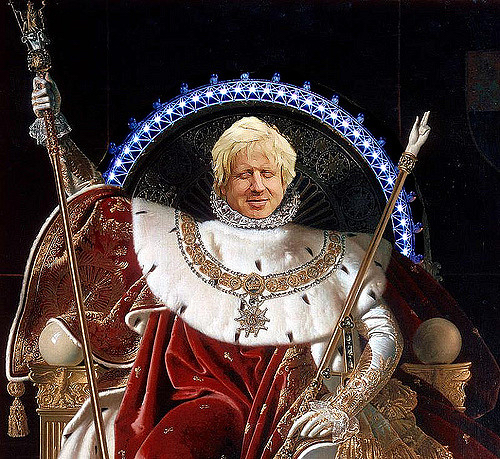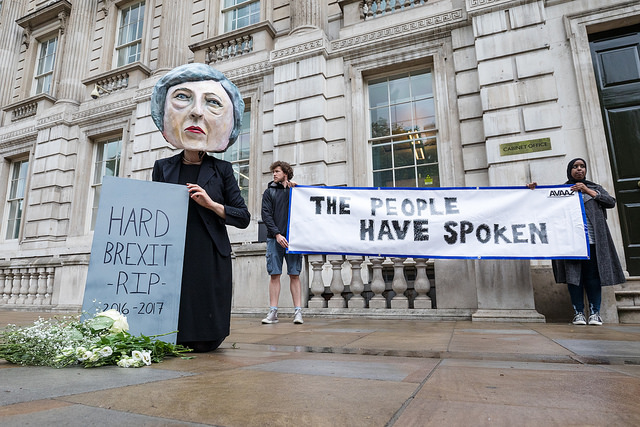If the Financial Times has it right, the centre-left is on course to win Britain’s general election. According to the erstwhile pink tabloid, it all comes down to math. Statistics show that a Labour-SNP government has a 32.5% of victory, whereas the governing Tories lag painfully behind, at 0.39%. If true, it’d be a spectacular drubbing.
What gives? The answer, in no uncertain terms, would come down to leadership. For a long time, David Cameron has painted himself as a “moderniser” of the old nasty party. Really this just means Cameron is socially and economically liberal in the classical sense. The rest is just good public relations. The same can be said for his childhood chum George Osborne, and his potential rival, Boris Johnson. It would be easy to read this situation as entirely new, but its roots go much deeper than many would like to admit.
The rise of market liberalism in the Conservative Party reached its zenith as the so-called golden age of capitalism began to close. The new ideal society being clusters of atomised individuals, who enjoy a range of choices greater in the market than in politics. The ideal state being a slim-line apparatus concerned with securing order, while it maintains the imbalance of property and power. This is what Jacques Chirac once described, dismissively, as “Anglo-Saxon ultra-liberalism”.
The post-war settlement of universal social protection meshed well with a particular kind of conservatism. It was tolerable for patrician rightists, such as Harold MacMillan, Alec Douglas-Home, even Anthony Eden and Winston Churchill, who embraced what their continental counterparts described as the ‘dirigiste’ model and the ‘social market’ economy. As long as civil and cultural institutions remained hierarchical and authoritative these conservatives could make peace with social democracy.
The Birth of Ultra-Liberalism
All of this changed in the early 1970s when Ted Heath made his “dash for growth”. Up until this point, the social democratic consensus had held that the best way for capitalism to work would be to ensure rising living standards for the majority of people. Inflation became a means for the Labour Party to avoid fulfilling its commitment to redistributing wealth. By the late 1960s, the cracks were showing, as trade unions began to raise their demands on the system. The Heath government was the first right-wing response to this.
At first Heath rejected the post-war consensus that the state can and should intervene in economic affairs. Then Rolls Royce went bankrupt and the closure of numerous factories led to higher unemployment. Heath backed away from the approach, and began to liberalise credit and raise public spending to bolster demand and growth. The UK economy boomed for a brief moment, but then stagflation emerged as unemployment and inflation began to rise at the same pace. The Keynesian orthodoxy was left perplexed.

By 1973, Ted Heath was trying desperately to regain control of the situation. He slammed the breaks on wages, prices and even profits in a bid to slow the tides of instability. The economy was facing a squeeze from the OPEC protest over the Arab-Israeli war leading fuel prices to jump 400% and pushing inflation to 27%. In the end, Heath put the whole country on a three-day week and prompted industrial action from the mining unions. Faced with this, Heath called an election, expecting his position to reaffirmed, only to be thrown out.
It was a defeat that the Conservative Party would never forget. However, the battles of the 1970s would give birth to the UK consensus of today; it meant the death knell for the post-war establishment. The idea that the economy could be managed began to be viewed as discredited among the old parties. The workers’ share of GDP reached its apogee between 1967 and 1973. Profitability was facing an unprecedented squeeze from the labour movement, and the Labour Party began to fear it could not play the old games it had.
Unwilling to wage distributional battles, the Labour governments of Harold Wilson and Jim Callaghan implemented austerity measures at the behest of the IMF. The country remained wracked with strikes and stagflation and the failure of centre-left politics emboldened right-wing forces. Then in 1979 – with the triumph of Margaret Thatcher – the British ruling-class finally took off the gloves, and it hasn’t put them back on since.
In stark contrast to the patrician conservatives of the 1950s and ‘60s, the Thatcherites represented untrammelled individualism. Monetarism, the theory that the root and branch of Britain’s ills were in overspending, took hold. So the best way to reduce inflation, and ultimately restore strength to the economy, was to reduce public expenditure.
Conveniently, this meant that the establishment could disregard paternal notions of public service and civic duty. Instead, the state could now chisel away at the gains of the working-class and restore profitability to the system.
New Hopes and Prospects
If there is any doubt about the particular aims of the Thatcher government, one better turn to its apparatchiks. Years later Alan Budd, an adviser of Thatcher, claimed he worried that the Marxists were right: the value of monetarism was not in its effectuality in economic terms, but in its success at raising unemployment served to create a reserve army of workers. This helped to defeat the trade unions and pin down wages, while the elites could reconsolidate.
After the death of Thatcher, traditionalist conservative Peregrine Worsthorne bemoaned the loss of civic responsibility among the ruling-class. He compared it to the death of proletarian solidarity, which had also been secured in this period, as the country was wrestled from the hands of trade unionists and given over to Essex Man. By now Worsthorne, once a figure of the old establishment, which had sought order and hierarchy above all else, had embraced multiculturalism and even ‘political-correctness’. And this is symptomatic.
It is only after the 18 years of Thatcherism that the Conservatives began to move towards Cameron’s new “moderatism”. The Cameron leadership would pitch itself as ‘compassionate’, listening to CDs, and hugging hoodies. By the time David Cameron found himself in power, he was running with the ‘Big Society’ idea of Red Tory Phillip Blond. The aftershock of Thatcher had left New Labour to embed the right-wing orthodoxy. This consensus ensured austerity would come into place no matter who won in 2010.
Now as the Cameron government presents the public with ‘concessions’, such as £8 billion for the NHS, it seems the establishment fears it may not secure its post-Thatcherite gains. There may be the chance of a shift back towards mildly social democratic reform, what Michael Gove has described as a “lethal cocktail”. This cocktail is the best-case scenario, as the neoliberals look almost as exhausted as their left-wing opponents.
Photographs courtesy of the Number 10 and Alan Denney. Published under a Creative Commons license.





